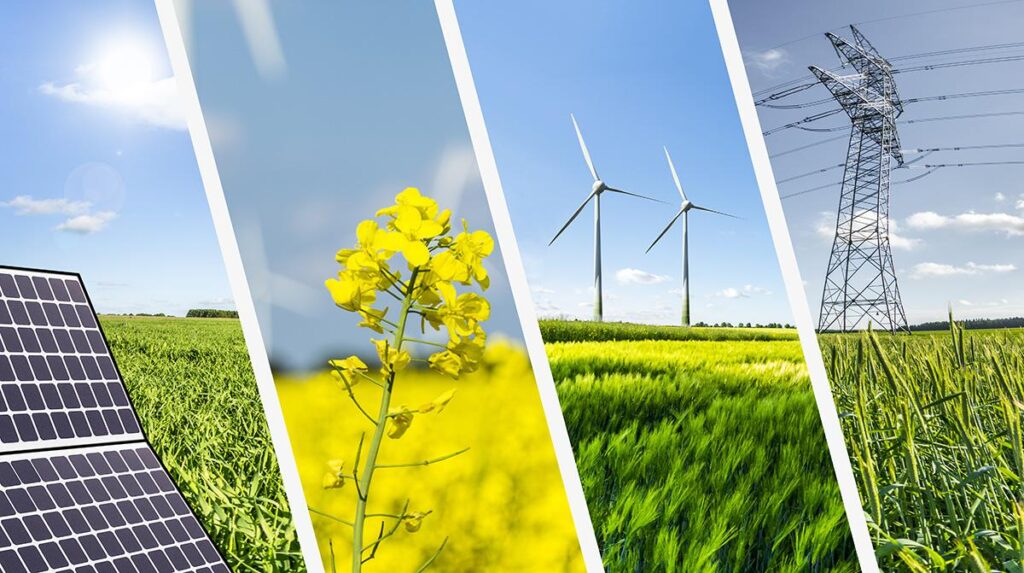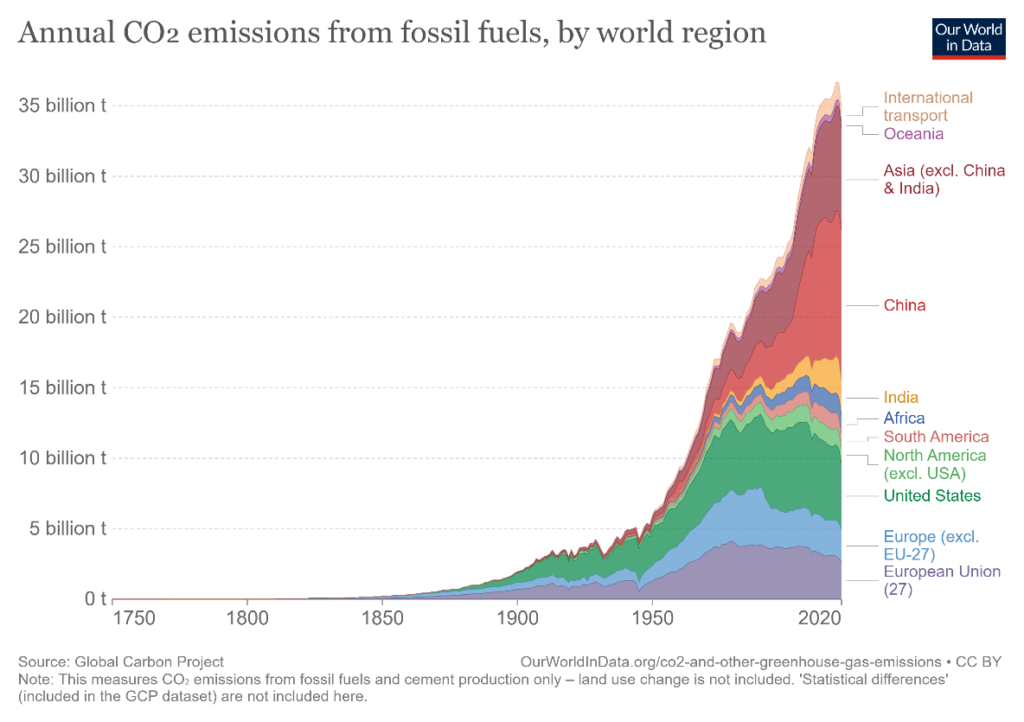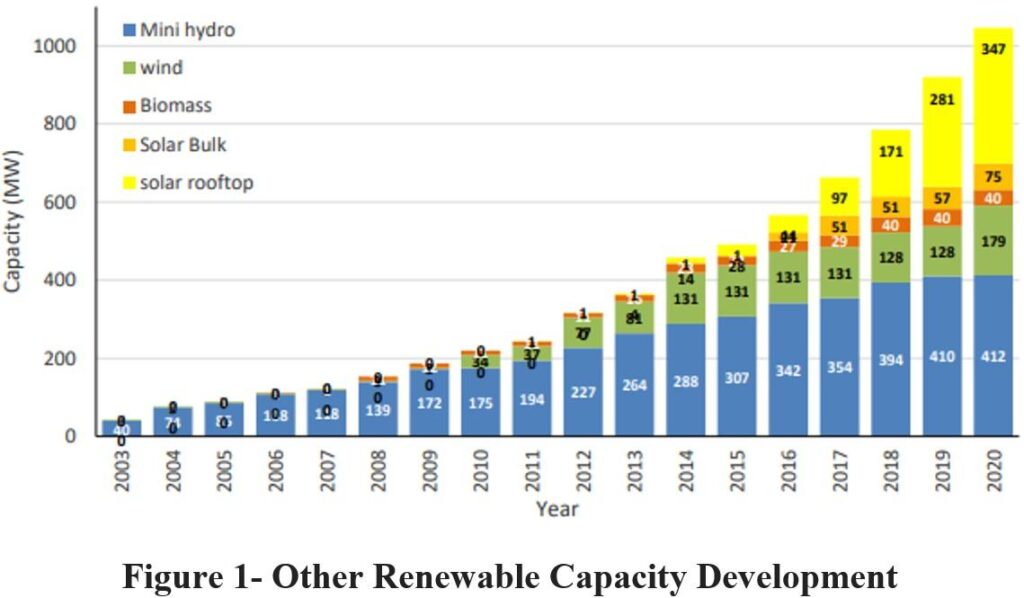Physical Address
23,24,25 & 26, 2nd Floor, Software Technology Park India, Opp: Garware Stadium,MIDC, Chikalthana, Aurangabad, Maharashtra – 431001 India
Physical Address
23,24,25 & 26, 2nd Floor, Software Technology Park India, Opp: Garware Stadium,MIDC, Chikalthana, Aurangabad, Maharashtra – 431001 India

Renewable Energy is the energy generated from replenishable sources such as sun, wind, tidal waves, hot springs, biomass, etc. While fossil fuel causes a lot of environmental issues, the process of taking energy from renewable sources remains more environmentally friendly. Many details about this can be taken from here | Archived.

As we all know, over the previous few decades, fossil fuels have been increasingly used as energy sources, throughout the world. When fossil fuels are burnt, greenhouse gases like Carbon Dioxide are emitted in excessive amounts. As a result, global warming has been increasing alarmingly and leading up to rapid climate changes.
But, when we use renewable energy, such harmful impacts are significantly diminished. Even though in certain times, renewable energy sources are being misused like situations like mini hydropower plant creations and etc. it does not depict the whole picture and could not undermine the positive impacts of renewable energy as a solution to climate change. Hence, renewable energy can be considered as one of the main solutions for climate change and can be used to mitigate the speed of climate change and related natural disasters. More details about this can be taken from here. Archived.
CLAIM: Renewable Energy is just a profit earning /money making scheme and not a solution to climate change.
SOURCES: This claim has been spreading in society like a social narration and also there are some website articles related to this. An article with similar content can be reached from here | Archived
What We found:
Climate Change
Climate change is connected with global warming which occurs due to the large emissions of greenhouse gases to the atmosphere. Greenhouse Effect is not a bad phenomenon in natural ways and it helps to reflect the sun waves from atmosphere to earth surface and keep the earth temperature at an optimum level. However, with the massive emissions of greenhouse gases, the greenhouse effect is happening in an unhealthy rapid way and the temperature of the planet earth is increasing and it is causing global warming related climate change.
Burning of Fossil Fuel for Energy
Usually, crude oil, gas and natural gas are considered fossil fuels as they originate from the buried bodies of plants and animals who died millions of years ago. As a result, fossil fuel molecular structure contains large amounts of carbon.
Fossil fuels are burnt to generate energy for various purposes like generating electricity, running vehicles, cooking purposes and various other things. Due to the burning of fossil fuels to get energy, major greenhouse gases like Carbon Dioxide emitting to the atmosphere and it causing global warming related climate change. More details about this can be read from here. Archived.
With large amounts of sulfur and nitrogen, Coal is the dirtiest type of fossil fuel. While oil also releases a significant portion of Carbon Dioxide. Combustion of natural gas also contributes to increasing the Carbon Dioxide percentage in the atmosphere. Details about this can be read from here. Archived.
When we compare the graphs of annual temperature rising of the world and annual Carbon Dioxide emissions due to fossil fuel burning, we can see those graphs are proportional to each other. Details about this can be taken from here. Archived.


Claim: Sri Lanka has very low renewable energy plans
Fact: Sri Lanka has considerable renewable energy plans but the current situation make it little complicated.
Sri Lanka government aims to be an energy self-sufficient nation by 2030. The objective is to increase the power generation capacity of the country from the existing 4,043 megawatts (MW) to 6,900 MW by 2025 with a significant increase in renewable energy.
Sri Lanka has already achieved a grid connectivity of 98 percent, which is relatively high by South Asian standards. Electricity in Sri Lanka is generated using three primary sources: thermal power (which includes coal and fuel oil), hydropower, and other non-conventional renewable energy sources (solar power and wind power).
From 2018 – 2037, Sri Lanka plans to add 842 MW of major hydro, 215 MW of mini hydro, 1,389 MW of solar, 1,205 MW of wind, 85 MW of biomass, 425 MW of oil-based power, 1,500 MW of natural gas and 2,700 MW of coal power into the electricity generation system. More information can be gathered in here. Archived.
Energy Parks
A renewable energy park, or “energy park” is an evolving concept, it is an area used and planned for the purpose of clean energy development, like wind and solar generation. This renewable infrastructure can serve as smart and sustainable assets for areas with surplus industrial property.
Renewable energy parks not only provide a source of reliable, locally-produced clean energy, but they have also contributed to eco-tourism and served as an educational resource to local schools, universities and business groups. More on this here. Archived.
Claim: Solar power is a high-cost method. Since it is not applicable to countries like Sri Lanka.
Fact: Only the installation cost is relatively high but Solar is a sustainable method over time.
Sri Lanka is endowed with several types of renewable energy resources, including biomass, hydropower, solar, and wind. Solar Power Generation is the main form of renewable energy source that indicates the highest growth during the last few years. The annual electrical energy produced from Solar has risen nearly 46% in the past two decades as illustrated in the figure below. The total capacity of commercial Solar Power Plants by end of 2020 was 67 MW and nearly 347 MW of Solar rooftops were also connected by end of 2020.

Since, Solar power installment cost is higher government has offered certain concessionary loan schemes from time to time to encourage more users to consider this option. However, there has been certain hinderances from approvals from local authorities related to power sector, which has significantly hindered the progress of such projects in massive scale.
The maintenance cost is minimal for solar and since Sri Lanka is a country located close to the equator continuous supply of sunlight to generate solar power, is not a issue for most parts of the country. Therefore, sustainable and eco-friendly solar power is better applicable to Sri Lanka